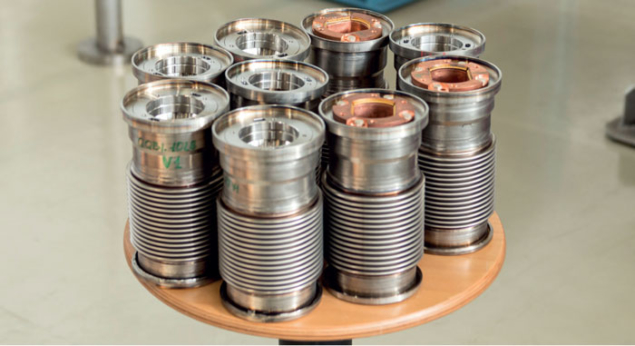Photos highlight some of CERN’s preparations for a busy two years of maintenance and consolidation.
The LHC has been delivering data to the physics experiments since the first collisions in 2009. Now, with the first long shutdown, LS1, which started on 13 February, work begins to refurbish and consolidate aspects of the collider, together with the experiments and other accelerators in the injections chain.
LS1 was triggered by the need to consolidate the magnet interconnections so as to allow the LHC to operate at the design energy of 14 TeV in the centre-of-mass for proton–proton collisions. It has now turned into a programme involving all of the groups that have equipment in the accelerator complex, the experiments and the infrastructure systems. LS1 will see a massive programme of maintenance for the LHC and its injectors in the wake of more than three years of operation without the long winter shutdowns that were the norm in the past.
The main driving effort will be the consolidation of the 10,170 high-current splices between the superconducting magnets. As many as 1000–1500 splices will need to be redone and more than 27,000 shunts added to overcome possible problems with poor contacts between the superconducting cable and the copper stabilizer that led to the breakdown in September 2008.
The teams will start by opening up the interconnections between each of the 1695 main magnet cryostats. They will repair and consolidate around 500 interconnections at a time, in work that will gradually cover the entire 27-km circumference of the LHC. The effort on the LHC ring will also involve the exchange of 19 magnets, consolidation of the cryogenic feed boxes and installation of pressure-relief valves on the sectors that have not yet been equipped with them.
The Radiation to Electronics project (R2E) will see the protection of sensitive electronic equipment optimized by relocating the equipment or by adding shielding. Nor will work during LS1 be confined to the LHC. Major renovation work is scheduled, for example, for the Proton Synchrotron, the Super Proton Synchrotron and the LHC experiments.
Preparations for LS1 started more than three years ago, with the detailed planning of manpower and other resources. For example, Building 180 on the Meyrin site at CERN recently became a hive of activity as a training centre for the technicians who are implementing the various repairs and modifications. The pictures shown here give the flavour of this activity.






• More detailed articles on the work being done during LS1 will appear in the coming months. For news of the activities, watch out for articles in CERN Bulletin at http://cds.cern.ch/journal/CERNBulletin/2013/06/News%20Articles/?ln=en.








